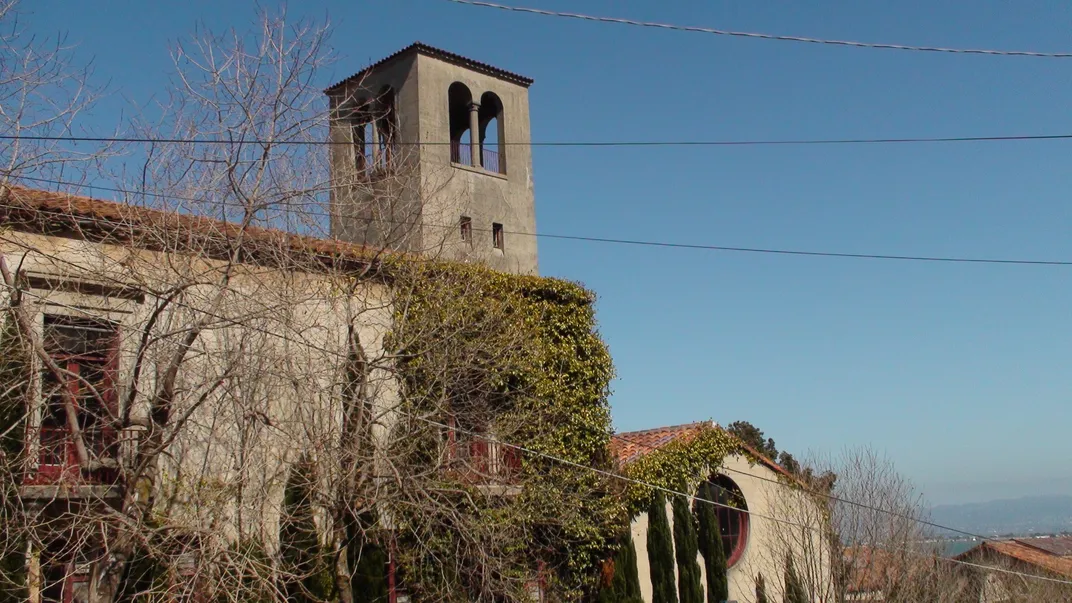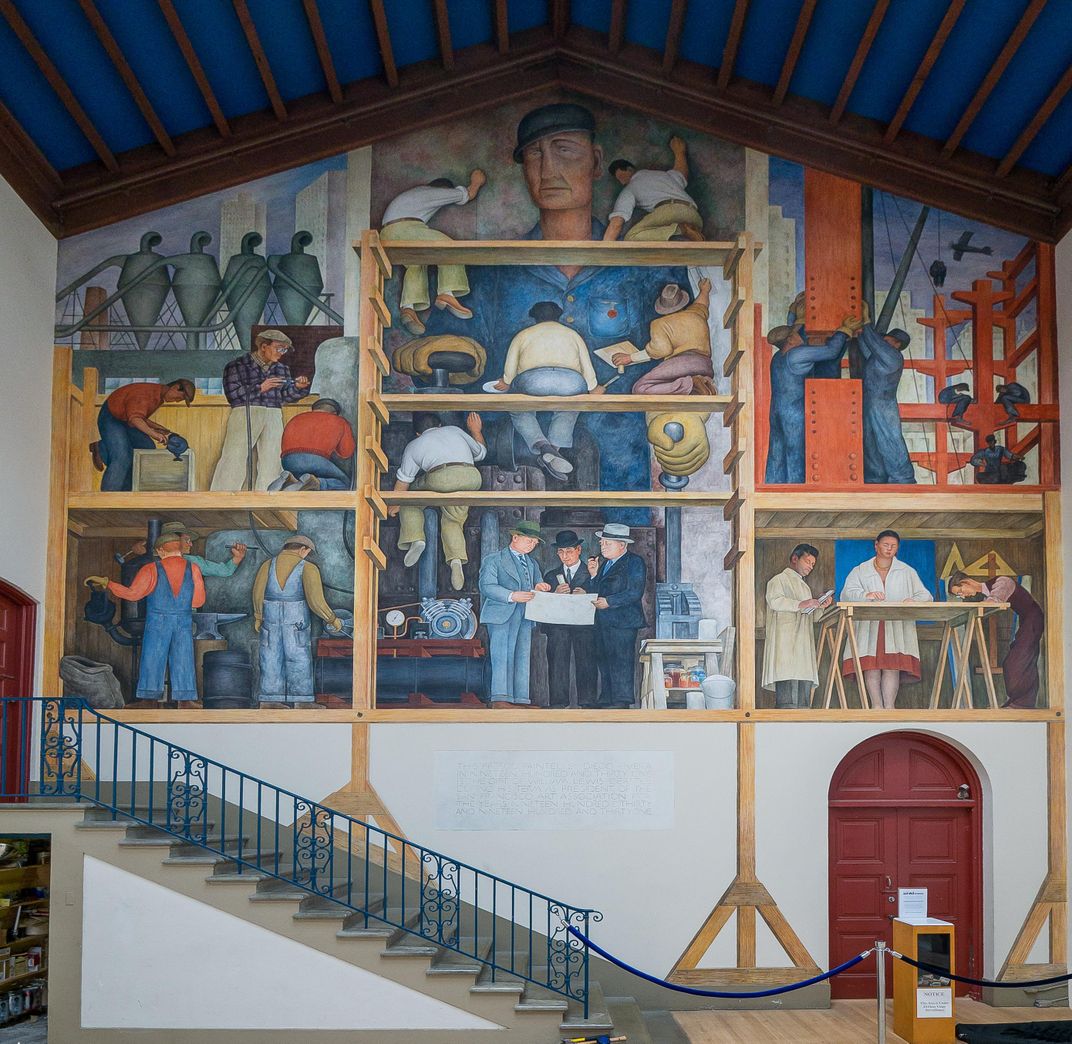Why a California School’s Potential Sale of Diego Rivera Mural Is So Controversial
Local officials are seeking landmark designation for the 1931 artwork, likely blocking the San Francisco Art Institute’s plan
/https://tf-cmsv2-smithsonianmag-media.s3.amazonaws.com/filer/ff/c2/ffc2e20f-748a-43f3-be50-f960530aa583/6947225359_e7acfbe897_o.jpg)
One of the oldest art schools in the country is currently in dire straits.
Last year, the 150-year-old San Francisco Art Institute (SFAI) laid off dozens of employees and edged toward the brink of permanent shutdown. That fall, the University of California’s Board of Regents—citing the two institutions’ “more than a century old relationship,” per Vanessa Arredondo of the San Francisco Chronicle—paid off SFAI’s $19.7 million bank debt, rescuing the school’s campus and buildings from foreclosure.
With six years to pay back the debt, the beleaguered SFAI must now determine how to dig its way out of a financial hole. As Zachary Small writes for the New York Times, this predicament has reportedly prompted administrators to push for liquidating the school’s biggest asset: a beloved 1931 mural by famed Mexican artist Diego Rivera.
Some board members dispute the claim. Board chairwoman Pam Rorke Levy, for instance, tells the Times that “[o]ur first choice would be to endow the mural in place, attracting patrons or a partner institution that would create a substantial fund that would enable us to preserve, protect and present the mural to the public.”
In an interview with Small last March, however, Levy noted that she would be receptive to selling the artwork.
“As a small college in an expensive town, we are feeling the pain,” she added.
Titled The Making of a Fresco Showing the Building of a City, Rivera’s “fresco within [a] fresco” depicts engineers, art assistants, technicians, sculptors and the artist himself hard at work on a fresco depicting an oversize, helmeted worker, according to SFAI’s website. Curators estimate the value of the mural—which SFAI still owns—at about $50 million.

Rivera’s mural isn’t painted directly onto the wall, meaning it could potentially be moved—a process that curator Rosa Lowinger tells the Los Angeles Times’ Jessica Gelt could cost between $1.5 and $2 million. The New York Times reports that filmmaker George Lucas has expressed interest in purchasing the mural for his Lucas Museum of Narrative Art, which is currently in development.
News of the potential sale prompted swift backlash from alumni, faculty and the broader San Francisco community. On December 30, a union representing the school’s adjunct faculty wrote an open letter to the school decrying the decision.
“The Diego Rivera mural is not a commodity,” the statement reads, as quoted by Sam Lefebvre of Hyperallergic. “Rather it is an artwork, given by a Mexican artist to a predominately white-serving school, that serves among many things as a focal point for complex and ongoing negotiations between artists and art institutions around issues of race, class, access, and labor.”
On January 7, Los Angeles artist and SFAI alum Catherine Opie announced in an open letter that she would withdraw one of her works from an upcoming auction benefiting the school.
“I can no longer be a part of a legacy that will sell off an essential unique piece of history,” she wrote.
The case’s latest development arrived on Tuesday, when the San Francisco Board of Supervisors voted unanimously to begin the process of designating the mural a landmark—a move that would block its potential sale, reports Sarah Hotchkiss for KQED. The campus itself already has landmark status, but it’s unclear if that protection extends to the mural itself, San Francisco Supervisor Aaron Peskin, who introduced the legislation, tells Hyperallergic.
If the mural does receive landmark status, school officials will have a much more difficult time removing or selling the work, reports Small in a separate Times report. Thanks to this latest move by the Board of Supervisors, officials say that selling the mural is likely off the table for now.

Peskin tells Mission Local’s Joe Eskenazi that the notion of selling the Rivera work is “heresy.”
“It would be a crime against art and the city’s heritage,” Peskin adds. “Educational institutions should teach art, not sell it.”
SFAI President William Gerstle commissioned the mural in 1930. Rivera and his wife, fellow artist Frida Kahlo, moved to San Francisco in November of that year; the muralist began working on the commission in May 1931. While in San Francisco, Rivera also painted a mural at the Pacific Stock Exchange building, now called the City Club of San Francisco, per KQED.
According to SFAI’s website, the mural “powerfully conflates art and labor—the sheer ‘work’ of creative practice with the individuals who surround, support, and fund a work of art.”
Rivera was active member of the Mexican Communist Party, and this mural embodies his belief in the importance of the industrial worker, depicted here as a larger-than-life presence looming over a busy scene.
James Oles, curator of “Diego Rivera’s America,” an exhibition slated for 2022 at the San Francisco Museum of Modern Art, tells Hyperallergic that Rivera switched from easel painting to murals in 1920s Mexico in part because murals lasted longer. Unlike a framed painting, large-scale public murals are difficult to buy or hoard for private consumption.
“The whole point for [Rivera],” Oles tells Hyperallergic, “was they’re not commodities.”
/https://tf-cmsv2-smithsonianmag-media.s3.amazonaws.com/accounts/headshot/nora.png)
/https://tf-cmsv2-smithsonianmag-media.s3.amazonaws.com/accounts/headshot/nora.png)